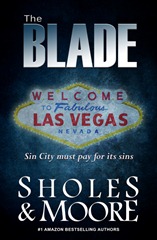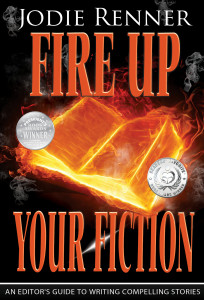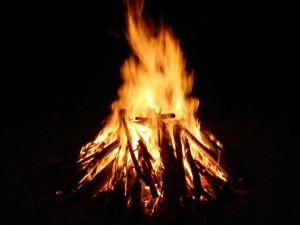 I’m pleased to welcome to TKZ my guest, Jodie Renner, freelance fiction editor and craft writer. Jodie is currently editing my next thriller THE BLADE (co-written with Lynn Sholes), soon to be released as an indie published e-book. Not only is she doing a great job of finding all our line and copy edit stumbles, but she’s got a keen knack for suggesting just the right content tweaks to help tighten the story. I asked Jodie to put together some thoughts and tips for writing action scenes. Here’s her terrific post. Enjoy!
I’m pleased to welcome to TKZ my guest, Jodie Renner, freelance fiction editor and craft writer. Jodie is currently editing my next thriller THE BLADE (co-written with Lynn Sholes), soon to be released as an indie published e-book. Not only is she doing a great job of finding all our line and copy edit stumbles, but she’s got a keen knack for suggesting just the right content tweaks to help tighten the story. I asked Jodie to put together some thoughts and tips for writing action scenes. Here’s her terrific post. Enjoy!
————-
Thanks, Joe! Great to be here.
I specialize in editing thrillers, and I sometimes get asked how editing suspense fiction is different from editing other genres. That’s a huge topic, too long for one blog post, and would include specific approaches to various elements like premise, plot, characterization, pacing, word choice, and writing style.
For this post, I’ll just talk about writing effective action scenes, which can appear in many other genres besides thrillers.
When your characters are running for their lives, or your hero is in a race against time to save innocent lives, it’s time to write tight and leave out a lot of description, especially little insignificant details about their surroundings. Characters on the run don’t have time to admire the scenery or décor, start musing about a moment in the past, or have great long thoughts or discussions. Their adrenaline is pumping and all they’re thinking of is survival – theirs and/or someone else’s.
Of course, if the details of the setting are significant or would somehow help or hinder your protagonist, then definitely include them. Basically, put yourself in the head and body of your character under stress, fighting for her life, and see/hear/smell/feel what she does, then react as she reacts.
SOME QUICK TIPS FOR WRITING STRONG ACTION SCENES
~ Show, don’t tell (of course!). Play the scene in real time, with actions, reactions, and dialogue.
~ Use deep point of view. Stay in the POV character’s head and body.
~ Avoid info dumps. Keep the readers right there in the scene with the characters. Don’t intrude as the author to clarify anything. If details need explaining, fit that in somehow before the tense scene starts.
~ Evoke the senses. Show your viewpoint character’s vivid sensory impressions, so the reader sees, hears, smells, tastes, feels what he does.
~ Amp up the imagery. Use the most concrete, suggestive nouns and the most powerful, evocative verbs you can find.
~ Show inner reactions. Reveal your POV character’s emotions, brief thoughts, and physical reactions, starting with their visceral responses.
~ Use tight, staccato thinking. Avoid long, involved thought processes, which deflate tension and slow things down.
~ Describe physical actions succinctly, for fast pacing and high tension. Don’t get into distracting minor details about which hand or finger or foot and exactly how high or low, unless it’s important for some reason.
~ Show other characters’ threats and reactions through their words, tone of voice, actions, body language, and facial expressions.
~ Use rapid-fire dialogue. Avoid complete, correct, thoughtful sentences and lengthy discussions among characters.
~ Write tight. Cut out any little unneeded words that are cluttering up sentences and slowing down the pace.
~ Use short sentences and paragraphs, for a tense, breathless, staccato effect. – Writers and readers – do you have any tips to add to this list?
SOME BEFORE-AND-AFTER EXAMPLES OF EFFECTIVE ACTION SCENES
(Well-disguised from my editing. The “after” examples are of course only one possibility among many.)
Before:
Fortunately for Jennifer, the attacker was far enough away that when he attempted to grab her she sidestepped him and delivered a sharp kick to the outside of his left knee. He grunted and fell back against the stack of wooden crates. He then got up clumsily, rubbing his arm, showing his anger at how easily Jennifer had dodged and hit him.
After:
The attacker lunged at Jennifer. She dodged to the side and delivered a sharp kick to his knee. He grunted and fell against the stack of wooden crates. He scrambled up, rubbing his arm, eyes full of hate.
Before:
His facial expression changed from one showing loathing to one communicating unrestrained joy. Jennifer realized at that moment that she had made a fatal mistake. She looked to her right. The door leading out of the warehouse was about fifty feet from where she was standing.
After:
His expression changed from loathing to amusement. Jennifer knew she had made a fatal mistake. She searched for the exit door. It was to her right, about fifty feet away.
Before:
An inline skater came careening around the corner and skated fast towards them, shouting loudly. Josh shot a look back at Amy as he grabbed her arm and pulled her bodily to the edge of the street out of the path of the oncoming skater.
After:
An inline skater came careening around the corner and barreled towards them, yelling. Josh grabbed Amy’s arm and yanked her out of the way.
Writers – feel free to add a before and after example of your own in the comments!
 For more on this topic and on writing tighter, see Jodie’s book, Fire up Your Fiction.
For more on this topic and on writing tighter, see Jodie’s book, Fire up Your Fiction.
Jodie Renner is a freelance fiction editor and the award-winning author of three craft-of-writing guides in her series An Editor’s Guide to Writing Compelling Fiction: Captivate Your Readers, Fire up Your Fiction, and Writing a Killer Thriller. She has also published two clickable time-saving e-resources to date: Quick Clicks: Spelling List and Quick Clicks: Word Usage. You can find Jodie at www.JodieRenner.com, www.JodieRennerEditing.com, her blog, http://jodierennerediting.blogspot.com/, and on Facebook, Twitter, and Google+.


